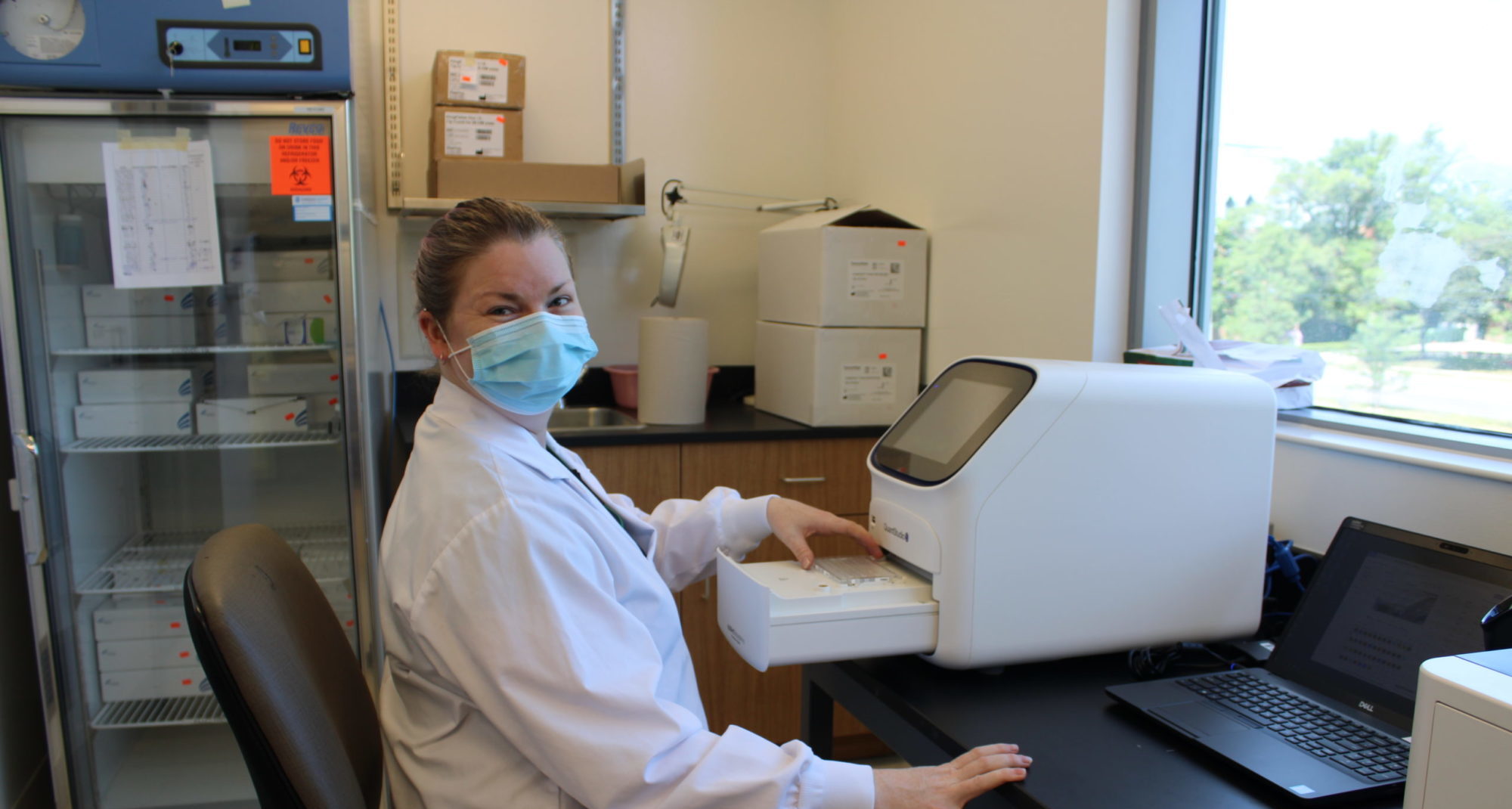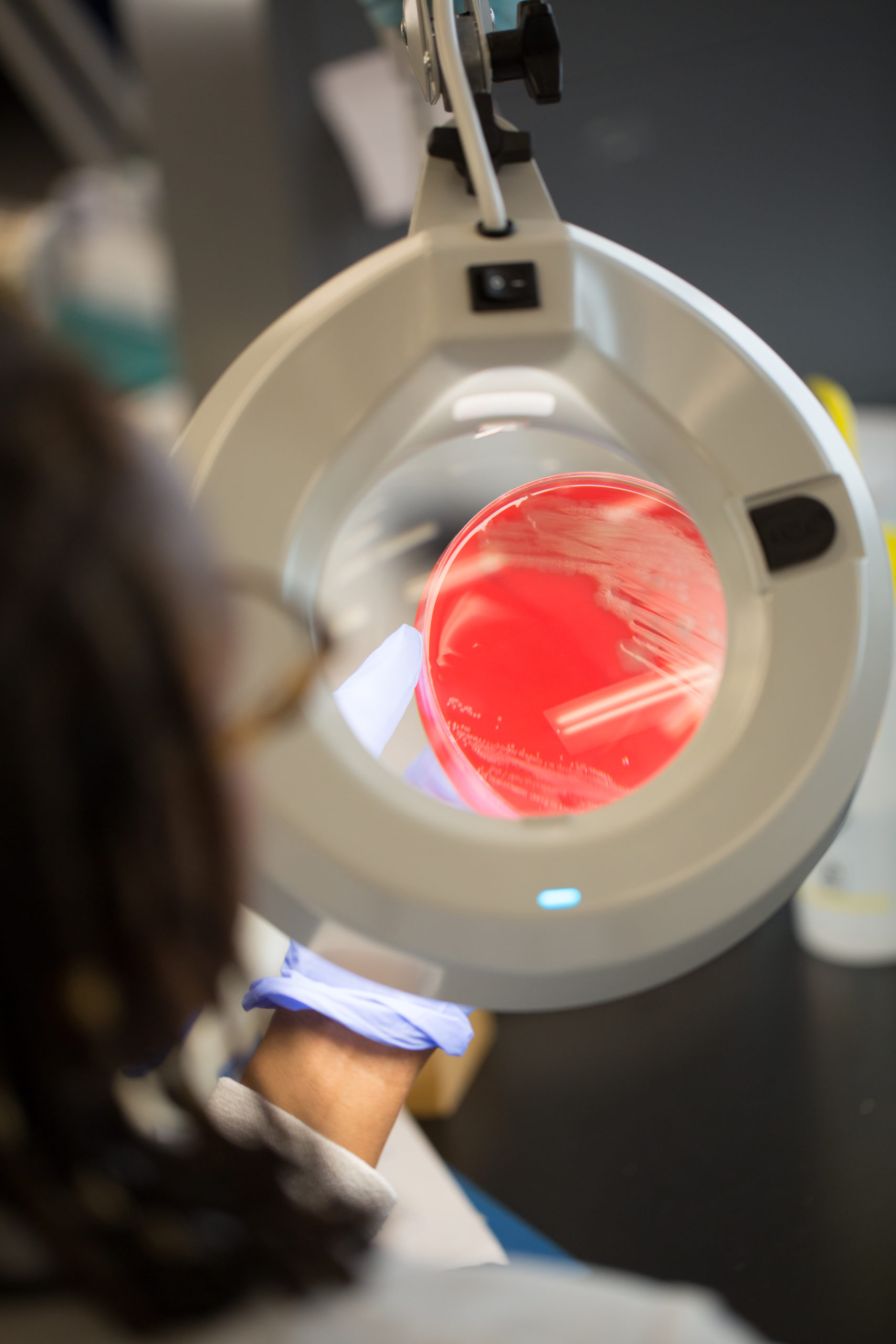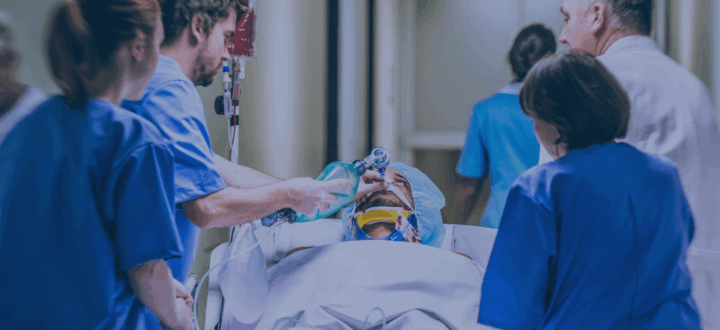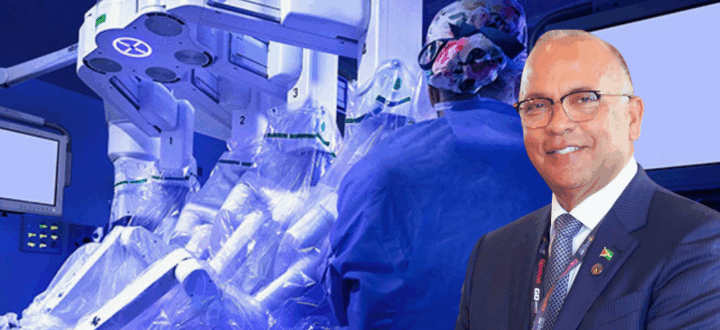Inside Humber’s Lab with Medical Laboratory Technologist Chantal Morris
Throughout the pandemic, Humber’s Laboratory team has been incredibly hard at work. In addition to their important role in helping our Hospital accurately diagnose patients across all Programs of Care, they have taken on the burden of processing tests for COVID-19, working tirelessly throughout the spring, summer, and fall.
When COVID cases in the GTA dipped in the warmer months, testing levels remained high. So we (virtually) sat down with Chantal, one of our amazing Medical Laboratory Technologists, to learn more about the team that has been working non-stop since March 2020.

“Our team has been hard at work since the beginning of the pandemic,” says Chantal. “I’m so proud that we are pushing through every day.”
Tell us a little about yourself!
My name is Chantal and I’m a Medical Laboratory Technologist at Humber River Hospital, specialized in microbiology. I’ve worked in our lab since the Wilson Site opened five years ago.
What does the lab do?
A lot of what we do in the lab involves identifying bacteria that could be causing a problem for our patients, so that the Hospital can diagnose and treat them.
During the pandemic, we have started processing a lot of COVID tests, which has been an adjustment from microbiology because viruses are much smaller than bacteria – we’re used to being able to see what we’re working with!
What makes you proud of your team in the lab?
Our team has been hard at work since the beginning of the pandemic. We have trained a bunch of new staff – including staff from other departments – to keep up with demand, and the work has still been non-stop.
I’m so proud that we are pushing through every day. Everyone is working collaboratively and even though there are moments when we are overwhelmed, we are getting it done together.
How does the second wave of COVID-19 feel different from the first wave?
During the first wave, we didn’t know what to expect. There was a lot of uncertainty. We didn’t know exactly what role our lab would play in testing and we were worried about things like having enough Personal Protective Equipment.
We’re in a routine now, so as far as testing goes for the second wave, we have a handle on this. Teams from across the Hospital are working together so that the whole testing process runs smoothly. COVID testing has been a lot of work and we have been busy since the pandemic started, so seeing the numbers rising again is still disappointing. We are bracing ourselves.

“A lot of what we do in the lab involves identifying bacteria that could be causing a problem for our patients, so that the Hospital can diagnose and treat them.”
During the first wave, our donors funded three new testing machines. What does having those machines mean for our Hospital?
Labs across the province are trying to process a massive number of tests right now, so the more tests we can run in-house the better.
The new testing machines are allowing us to test patients before they have surgery at Humber, onsite, at a fraction of the time it would take to send them out. The increased throughput from the machines and the hard work of our lab means that our patients and their healthcare teams can have the peace of mind that they are going into surgery safely.
Our lab is also processing the tests of inpatients and patients who are admitted through Humber’s Apotex Emergency Department. Testing in-house means we can rule out COVID faster for these patients, which helps the Hospital provide better care.
In your opinion, what is the coolest way technology is being used at Humber River Hospital?
When the Command Centre opened, we saw a big difference in how aggregating data from across the Hospital in a central “mission control” could help better manage patient flow. For example, if a patient is waiting on a test result from the lab to be discharged from the Hospital, the Command Centre can identify that step and we make it happen.
Also, we have some really cool equipment in the lab! One of our machines can identify bacteria in only a few minutes using a laser beam. The laser aerosolizes the protein in the bacteria, which flies up a vacuum in a unique pattern. A detector makes a graph of that pattern and compares it to a whole database of graphs to identify the bacteria.
The evolution of microbiology is amazing. We are using lasers and computers to identify things in minutes that used to take days to identify – and that means faster, better patient care.
What inspires you?
I have always loved science, microbiology, and the excitement of opening a Petri dish to discover what’s inside. I find our hands-on work in the lab so interesting, but ultimately I got into healthcare to help people. Knowing that the work I love is helping people is very rewarding.






